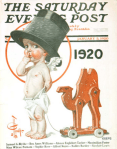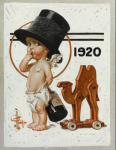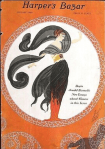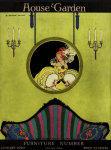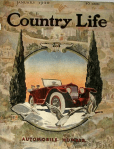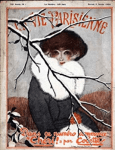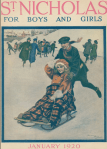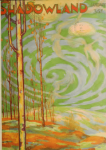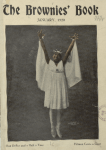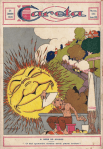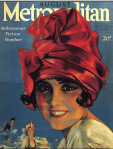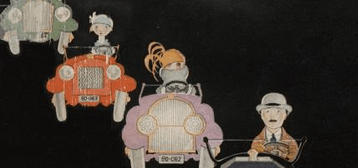Happy New Year, everyone!

The beginning of a new decade is a good time for a fresh start. A time to review your diet, and your exercise routine, and your blog title. When I launched My Year in 1918 on January 1, 2018, I expected it to be a one-year journey to the world of a hundred years ago. Which it was, in the sense that I spent that year reading ONLY as if I were living 100 years ago. Since this is not something one can do indefinitely, I reentered the 21st century at the beginning of 2019. I found I didn’t want to leave the 1910s behind, though, so I continued reading and writing about the world of 1919.

Which, since I didn’t listen to my friend Emily, who warned me about this exact scenario, left me with an outdated blog name. I didn’t worry about this too much in 2019, seeing the year as an extended victory lap. But, as the 1920/2020s approached, I was growing tired of having to give long-winded explanations about why my blog was called My Year in 1918.
So I’m excited to announce this blog’s new, non-expiring, name: My Life 100 Years Ago.*

Now on to the most popular posts of the year.
The Top 10 wasn’t as competitive a category in 2019 as it was in 2018, when, posting with monomaniacal zeal, I ended up with 94 contenders. Last year I only published 21 posts. Still, thanks to the magic of Google search engine optimization—the more you’ve written the more important Google thinks you are, so you end up being, say, the go-to person on glamorous spy ring leader Despina Storch—I ended up with a slightly higher number of views in 2019 than in 2018.**
Here are the top 10 posts, starting with #7 because there is, weirdly, a four-way tie in that position.
#7 (tie). Ten 1919 Illustrators I’m Thankful For

I had a great time learning about the lives and art of these illustrators. My favorite discovery was Coles Phillips, who pioneered the Fadeaway Girl technique.***
#7 (tie). Can you beat me at this 1919 intelligence test? Probably!

Last year, I took a vocabulary-based intelligence test from 1918 and did pretty well. This year, I took a series of intelligence tests from 1919 and, well, the title says it all.
#7 (tie). My Perfect 1919 Summer Morning

I woke up one day in D.C. to find it was a miraculously beautiful August morning, then spent the whole day inside writing this blog post. It was worth it, though. For one thing, I now know way more than I used to about 1919 deodorant.
#7 (tie). Nobel Prize Laureate Selma Lagerlöf: A Swedish storyteller whose own story couldn’t be told
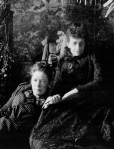
While spending a month in Sweden, I looked into the life of the first woman Nobel Prize laureate in literature and found lots of romantic intrigue.
#6. Princeton interlude: Orange and black is the new black
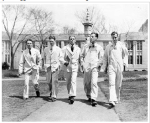
In which I go to my Princeton grad school reunion and take on a burning question: What’s with those goofy jackets?
#5. And the best novel of 1918 is…
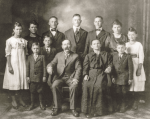
Good news—clickbait works! So I won’t tell you what it is here either. Hint: it’s based on the real-life woman pictured with her family in this photograph.
#4. My Quest to Earn a 1919 Girl Scout Badge, Part 2

I have had a huge amount of fun doing this blog. The intelligence tests! The quizzes on What’s Your 1918 Girl Job? and Did College Shrink Your Breasts?! The search for 1918 love! But setting out to earn badges from the 1916 Girl Scout handbook was the most fun of all. In this second round, I polished silver and translated Proust and played the recorder and…well, read for yourself!
#3. Children’s Books: Your 1919 Holiday Shopping Guide
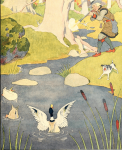
This was another of my favorite projects of the year, and readers must have agreed—this post shot up to #3 in only twelve days. One surprise was the amount of violence in children’s books of 100 years ago. The illustration here is from a NURSERY RHYME.
#2. April 1919 Ladies’ Home Journal Ads: A Riot of Color for Spring
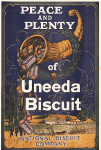
The popularity of this post taught me this lesson: “People don’t care what you write, just put up a bunch of cool pictures and they’ll be happy.”
#1. My Quest to Earn a 1919 Girl Scout Badge
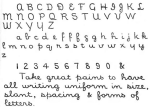
The humongous success of this post—it had three time as many views as the next most popular post of the year—shows that readers had as much fun as I did with the Girl Scout badge quest. Luckily, there are more badges to be earned this year, with a new edition of the Girl Scout handbook out in 1920. And if you missed the second installment, it’s just a click away at #4!
Honorable Mentions:

Exploring Provo–and Mormon History: Sometimes initial popularity hurts a post in the stats, because if you read the post at the top of the blog without clicking on it then it’s credited to the home page. This is what happened with this post, which tied the record for daily views when first published but ended up as #18 of 21 for the year.

Celebrating 100 Posts: 2017 Me Interviews 2019 Me about My Year in 1918: There’s no particular reason to give this post an honorable mention except that I like it, it wasn’t far out of tied-for-tenth place, and it’s a good introduction to the blog if you’re just discovering it now.
Dishonorable Mention

More beautiful images from 1918: I always hope that the least-viewed post of the year doesn’t turn out to be a labor of love that I spent days and days on. Luckily (and perhaps not coincidentally), this hasn’t been the case so far. 2019’s worst performer, with 10 views**** (which is at least better than last year’s two), is one of three posts of images that I published in the first weeks of 2019, when I was shell-shocked after emerging from 1918. So I guess the “people only want to look at pictures” rule isn’t infallible.
Best-Performing Post from 2018

In search of a good mother poem: Posts originally published in 2018 didn’t qualify for Top 10 honors. Which is bad luck for this one, which only came in 17th last year but was this year’s second most viewed overall. I hope that all these visitors weren’t seeking inspirational Mother’s Day verse, since they would have been disappointed. That is, I think “Dedication for a Plot of Ground,” William Carlos Williams’ tribute to his fierce grandmother, is inspiring, but I can’t imagine it on a needlepoint sampler.
All the best for the new year! I’m looking forward to sharing the Roaring Twenties with you.

*UPDATE 1/2/2020: This blog’s URL is now officially mylife100yearsago.com. Myyearin1918.com redirects to this site, so everything should happen seamlessly from your end regardless of how you access it, except maybe RSS feeds. (Drop me a line if it doesn’t.) Everyone on the internet made this process sound incredibly scary–“you’ll want to brush up on your FTP skills,” etc.–but it ended up taking five minutes on WordPress.
**Another thing about search engine optimization: Google severely punishes broken links, which my blog suddenly has lots of. The Modernist Journals Project recently revamped its site, breaking my many links to magazines such as The Smart Set, The Crisis, and The Little Review. I’m fixing them one by one. If you encounter a broken link to something you need (or just want) to see, send me a message on the Contact page and I’ll send you the link. (To the person who clicked eight times last week trying in vain to get to the issue of The Smart Set with H.L. Mencken’s review of My Ántonia in it, here it is.)
***Phillips seems to have been the inspiration for Grace Lin’s children’s book A Big Bed for Little Snow, which was just reviewed in the New York Times, with a fadeaway illustration from the book of a mother and child. In the book, Lin writes, “Little Snow listened to Mommy’s footsteps fade away,” which I suspect is a shout-out. (UPDATE 1/18/020: I sent a message to Grace Lin’s website to ask about this and got a response saying that Lin discusses the connection in this video. It’s well worth watching if you’ve got five minutes, and not just because of the Phillips connection.)
****But, remember, more people read it on the home page.

New on the Book List:
I have been very lazy about updates. I’ve recently added mini-reviews for the latest (and last) entries for 2019:
The Girl from the Marsh Croft, by Selma Lagerlöf (1908; translated 1910)
Understood Betsy, by Dorothy Canfield Fisher (1916)
Pictures of the Floating World, by Amy Lowell (1919)


